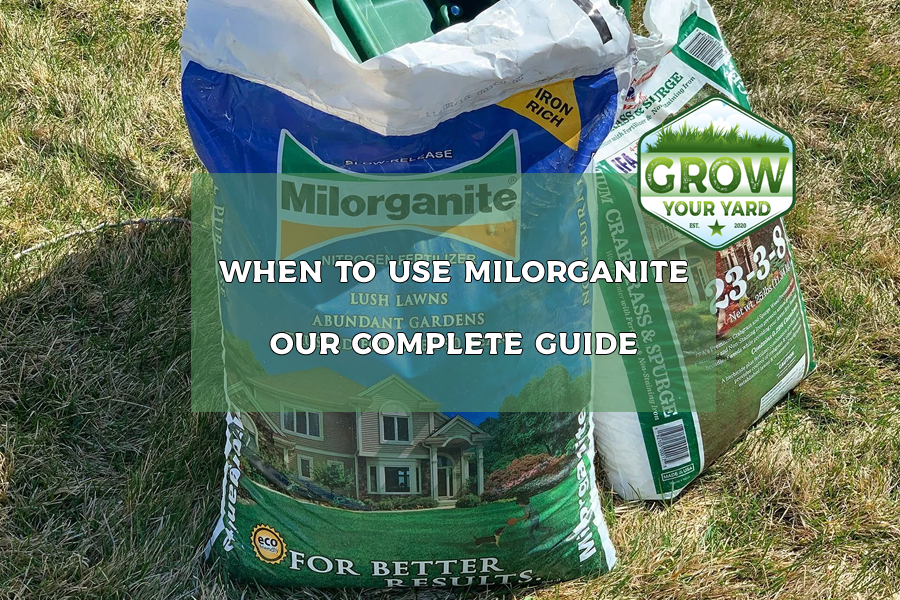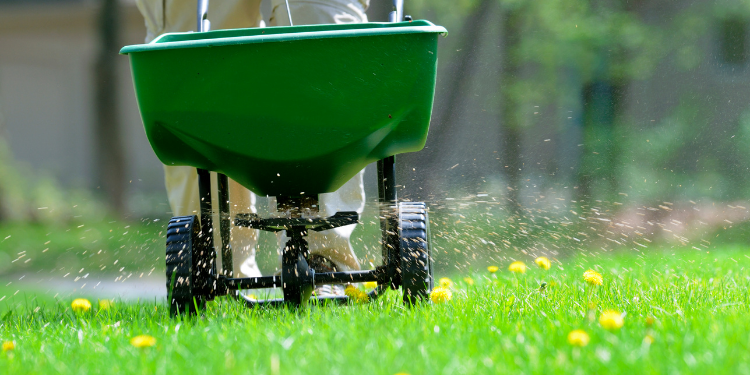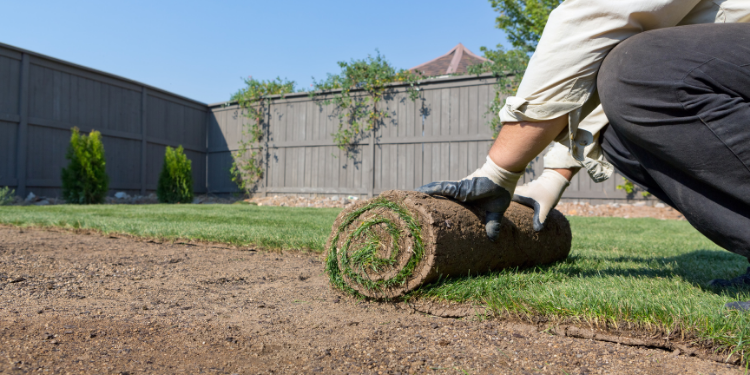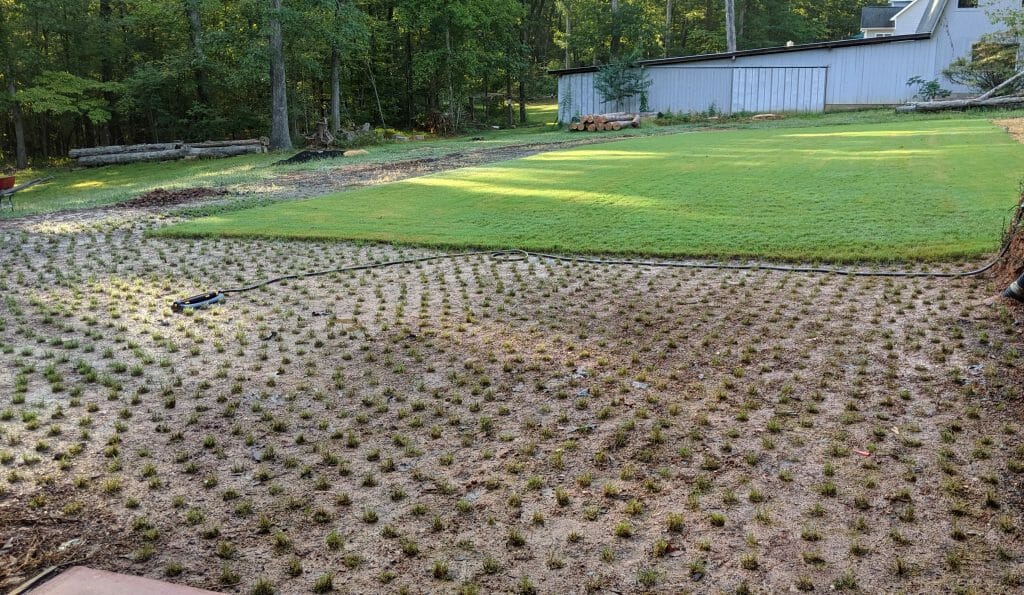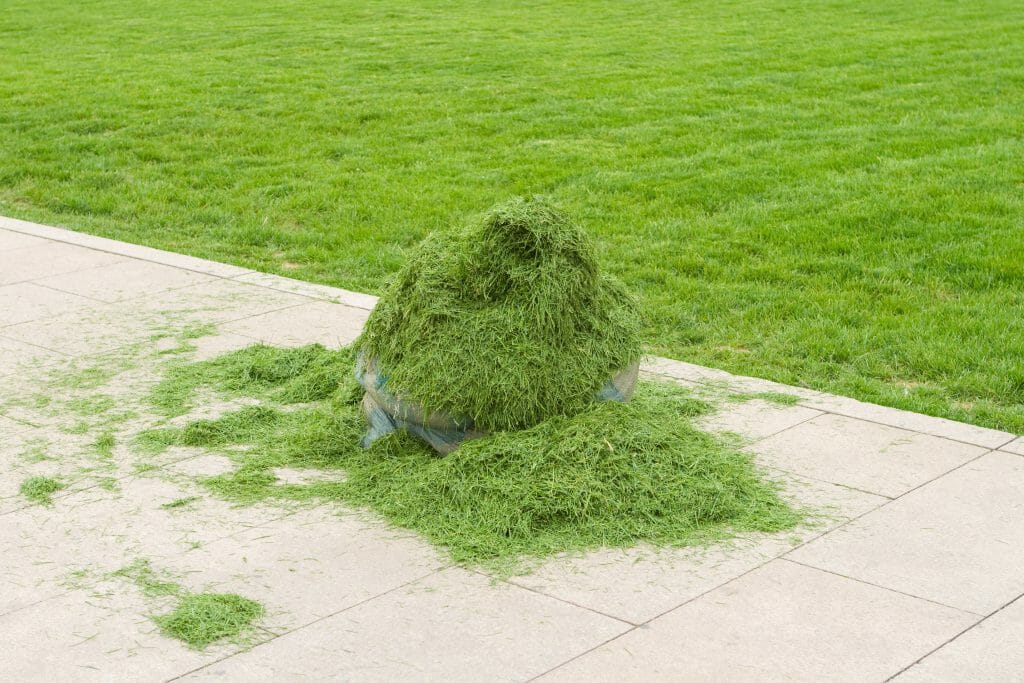If you want a thick, lush lawn, you have to provide your grass with the necessary nutrients that it needs. As you probably know, all plants need adequate nutrients to grow to their full potential, and grass is no exception.
However, not all fertilizers are alike. There are three primary ingredients that make up the majority of fertilizers. These are nitrogen (N), phosphorus (P) and potassium (K). You’ll find the breakdown of these three ingredients on most fertilizer packets as N:P:K.
Each of these ingredients provide different needs to your plants. For example, nitrogen stimulates lush green growth, phosphorus stimulate strong root growth and potassium stimulates flowering and fruiting.
So, for lush, green grass, the most important ingredient is nitrogen. Therefore, to make your lawn look its absolute best, you need to make sure that the grass receives plenty of nitrogen.
This is why you should consider using Milorganite.
What is Milorganite?
Basically, Milorganite is an organic nitrogen-rich fertilizer specifically for lawns. It’s actually made from wastewater that is treated with microbes. These microbes ingest the nutrients in the wastewater and are then heat-dried. This results in the fertilizer called Milorganite. The product is manufactured by the Milwaukee Metropolitan Sewerage District.
Even though Milorganite is a by-product of wastewater, it’s perfectly safe. You see, once the microbes have digested the nutrients in the wastewater, they die. They are then heat-dried at temperatures between 900 to 1200 degrees Fahrenheit in a kiln.
Any pathogens that may possibly remain, are killed by these extreme temperatures. This then leaves us with a nitrogen-rich fertilizer that your grass will absolutely love.
Milorganite also contains a lot of iron. This is particularly helpful for keeping your lawn nice and green. And, because the iron is released slowly over time, your lawn will continue to be vibrantly green all season long.
When Should you Apply Milorganite to your Lawn?
Getting the timing right when applying Milorganite to your lawn is crucial to get the results that you’re looking for. Remember, this fertilizer will stimulate the growth of the lawn so it needs to be applied during the optimum growing season.
Different grasses also respond better to different applications. Therefore, we’ll look at these separately.
Cool-Season Grass
Cool-season grasses include creeping bentgrass, Kentucky bluegrass, fescue and ryegrass. These grasses will benefit the most if you apply Milorganite around four times a year. Here’s the ideal schedule:
- In the early spring after the danger of frost has passed. Daytime temperatures should be above 60 degrees Fahrenheit. This would ideally be around early to mid May.
- During active growth early on in July. This is the time that your grass will be putting on a lot of growth and will require plenty of nitrogen to sustain this growth.
- The third application should be in the fall at the beginning of September. Your grass will still be growing at this time and will benefit from the extra nutrients.
- Give your lawn a final boost of Milorganite just before the first frosts start to arrive. Ideally, this would be the middle of November. This helps your lawn to prepare for the winter and store enough nutrients to stimulate growth once the weather warms up again.
Warm-Season Grass
Warm-season grasses include Bermuda grass, St. Augustine and centipede (learn the difference between bermuda and centipede grass). Milorganite can also be applied four times a year for these grasses but the timing will be slightly different. The application volume should be around 32 pounds per 2500 square foot of lawn.
Here’s the ideal schedule:
- Apply the first dose in early spring around mid March. Daytime temperatures should be just above 70 degrees Fahrenheit. This is the time that your grass wakes up from its dormant stage and begins to put on new growth.
- The second dose should be applied during the vigorous growth season. This would be around May. All this active growth needs a lot of nitrogen-rich fertilizer to sustain it.
- Give your lawn another dose around early September to sustain the growth, as it would have used up all the nitrogen you applied in May.
- The last dose of Milorganite can be applied in early October. This signals almost the end of the growing season and your summer grasses will soon become dormant to over winter.
DON’T MISS: Ironite or Milorganite, learn the difference here.
Tips on How to Apply Milorganite to Your Lawn
Milorganite is a granular fertilizer so it’s best applied with a fertlizer spreader such as a drop or broadcast spreader. Of course, you want to mow your lawn first if it’s already grown but try not to mow too low. You don’t want to scalp the grass.
Here are the steps to get the best results.
- Water your lawn. It’s best to do this around 2 days before you intend to apply the Milorganite. This means that the soil will still retain a little dampness but the grass blades will be dry.
- Aerate your lawn. This creates spaces for the fertilizer to move into the soil. It also helps to break up any thatch and loosens compacted soil. You can do with a mechanical aerator or just use a garden fork if you have a small lawn.
- Add the Milorganite into your spreader. Before you do this, close the hopper vents so that you don’t lose any fertilizer in the process.
- Spread the Milorganite over your lawn. To do this, it’s best to start at one end and walk in a straight line to the other end. Then, continue to walk across your lawn in straight lines so that you cover every inch of it. Try to avoid spreading the fertilizer on a windy day or just before a storm is predicted. This will ensure that the Milorganite will get to the roots of the plants without being washed away.
- Give your lawn a light watering. This helps to wash the fertilizer off the blades of grass and into the soil. Once the Milorganite is damp and in the soil, it will slowly release its nutrients to the roots of the grass.
- See the results. Because Milorganite is a slow-release fertilizer you won’t see the results immediately. Wait one or two weeks and you should start to see your lawn green up and add a lot more growth.
Milorganite’s slow-release system is particularly helpful for the health of your lawn. This is because unlike other nitrogen-rich fertilizers, it releases the nutrients slowly as and when the grass needs them. Therefore, the results you get may take a little longer to first appear, but they’re likely to last a much longer time. In fact, this fertilizer should continue working for about 10 weeks.
Using Milorganite for a New Lawn
If you’re planting a new lawn, you can still use Milorganite to get your lawn off to a good start. Just spread the recommended dosage over your soil. Then, using a rake or tiller, mix this into the top two inches of soil.
Then, you can either seed the area with lawn seed or lay down some turf, if that’s your preference. Once you apply a little water, it will help to activate the fertilizer and it should begin feeding the roots as soon as they show up in the soil.
Frequently Asked Questions:
Do you water after Milorganite?
Although it’s not necessary to water in Milorganite, it is advisable because this allows the fertilizer to be in contact with the soil. This makes it available to the roots immediately.
Can you use too much Milorganite?
Yes, applying too much of any type of fertilizer is harmful to the environment as the excess will wash away and could end up in your local waterways.
How long after Milorganite can I mow?
Because Milorganite becomes readily available to your grass once it’s watered in, you only need to wait about a week before mowing.
Do I need to mow before Milorganite?
Mowing before you apply any fertilizer is a good idea. It helps to remove winter debris and opens up the soil so that the fertilizer can reach the grass roots more easily.
Can you use Milorganite in hot weather?
Because Milorganite is an organic fertilizer, it won’t burn your grass like a chemical fertilizer will. Therefore, you can use it in hot weather.
Final Thoughts
So now you know exactly how to use Milorganite on your lawn. This organic fertilizer is nitrogen-rich and slowly releases its nutrients to your grass over about 10 weeks. It will keep your grass growing strong and looking lush and healthy.
Milorganite should be applied around four times a year and the schedule will depend on what type of grass you’re growing. And, because Milorganite is organic, it won’t burn your grass.
Have you had success using Milorganite? Please share your stories with us in the comments below.

